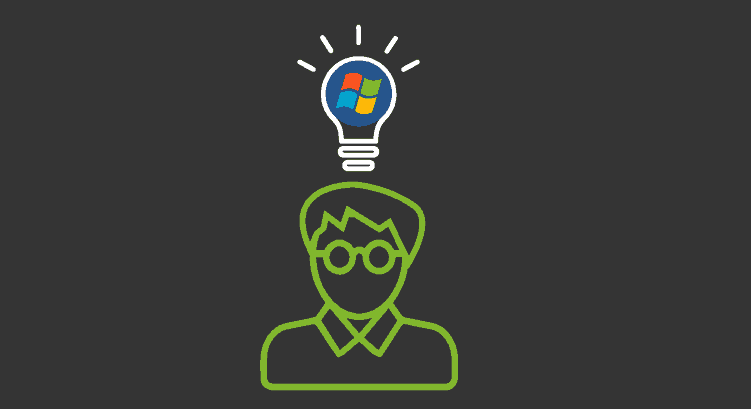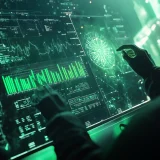Who is Bill Gates? Where did this computer genius come from?
“Be kind to the NERDS. It’s quite possible that you’ll end up working for one of them”. Who said this wonderful humanitarian sentence?
A) William Shakespeare.
B) Mahatma Gandhi
C) Bill Gates.
(It’s time for you to think about the answer. Tick-tock, tick-tock…)
RIGHT! Bill Gates! The good Bill is our favorite one and before leading the Forbes list of the most fortunate people in the world, he had a quite odd and enterprising past.
Bill Gates: “My ambition has always been to make dreams come true.”
Who is Bill Gates?
Bill, today, is more than retired from business, he is far from that megalomaniac empire he created with Microsoft and dedicates himself full-time to philanthropy (whatever that means). With a fortune of about $75 billion, Bill Gates went from being a child and a misunderstood college student to, in the good old days of Microsoft, earning $250 a second. I hope you were all college students and misunderstood children, in order to earn something like that someday.
Bill Gates: “Life is not fair, get used to it.”
Who is Bill Gates, then?
I bet that neither his parents nor his Harvard hobby teachers, nor his neighbors who were about to call the police, thought that, a few years later, he would be that rich. The question is: How did he achieve that?
Well, you don’t have to be too sorry for Billy, he was born into a well-to-do family in Seattle pre-grunge back in 1955. And no, they weren’t poor. His father had a count’s name, “William Gates”, and he was a well-known lawyer, married to Mary Maxwell, high executive in First Interstate Bank.
At the tender age of 13, Bill was already enrolled in a renowned school in Seattle. There, Bill Gates got to know computers, a moment that would change history as we know it. And he did, yes, thanks to the Mother’s Club. This women’s association, to which we owe so much, got a computer for school in a charity raffle. Billy sat in front of it for hours, scheduling games with his less millionaire colleague Paul Allen.
That “laptop”, a PDP-8, made by Digital Equipment, had the measurements of a modular wardrobe of a meter and a half, but it was enough for the young Billy and since then he dreamed of developing those gadgets so that everyone could have one. “I’m sure one of the reasons I was so determined to help develop the personal computer was because I wanted to have one for myself”.
Bill Gates: “Don’t compare yourself to anyone in this world. If you do, you’re insulting yourself.”
Years later, the dream began to materialize. It was 1975 and Bill and his partner Allen were taking a walk outside the university, when they ran into Popular Electronics magazine. In the magazine, there was the dream of any geek like him: a computer to fit it and assemble it in your own home! No keyboard, no screen, but for just $397!
But that was not the most important thing, my God, inside that box of lights, called Altair, there was something very super cool and promising for them: the new 8080 chip from Intel! Suddenly and before they could get ahead of themselves, they needed to create great software for that chip.
“Paul and I didn’t sleep much and lost track of night and day, but in just five weeks we had written our Basic and the first microcomputer software company was born. We once called it Micro-Soft“.
From there, Billy gets out of control and leaves the university, in the early years of Microsoft. What if head of marketing, what if finance, commercial agent … all while improving his own creation. The guy was raising the PC market and computer companies were going after him.
Finally, the volume of work was so high that he had to start delegating. His colleague at the university, Steve Ballmer, has been running the company ever since, since it wasn’t Gates’ real thing. Ballmer started hiring people and the company started to grow out of control.
Bill Gates: “The computer was born to solve problems that didn’t exist before.”
Even if it was a good thing, the product had not yet reached the great masses. It had not yet taken the step that the TV took in the fifties, for example. But it was in 1980 when the gentlemen of IBM presented themselves at the Microsoft office in Seattle and said to them: “Let’s see, gentlemen, we need you to write a software that will give life to a personal computer. How do you see that? ”. Immediately, Billy replied, “I accept!“
Billy’s team set to work, and with effort and perseverance brought to light the MS-DOS language.
In 1981, IBM finally brought us our precious PC (Personal Computer). It had an even cooler Intel chip, the 8088. There were three programs that could make it work: Digital Research, Pascal, and Microsoft’s MS-DOS. And yes, Bill Gates and his company were the winners. He only had to allow other brands to manufacture programs based on his MS-DOS at a low cost and ensure that his MS-DOS was the cheapest of the three competing programs. In addition, Microsoft did not give the exclusivity of its program to IBM, it also gave it to other computer manufacturing companies. And well, from there the PC began to conquer the market and with it our friend Bill Gates. Computer scientist, genius, philanthropist, and above all, a great person.
If you want to know more about what you can get in the computer world, you can continue researching in Pandora FMS‘s blog..
You still don’t know what Pandora FMS is? Pandora FMS is flexible monitoring software, capable of monitoring devices, infrastructures, applications, services and business processes.
Do you want to get to know it better and solve all your doubts? Click here: https://pandorafms.com/
Or you can also send us any query you may have about Pandora FMS. You can do this in a very simple way, using the contact form at the following address: https://pandorafms.com/contact/
Pandora FMS team will be delighted to help you!
Pandora FMS’s editorial team is made up of a group of writers and IT professionals with one thing in common: their passion for computer system monitoring. Pandora FMS’s editorial team is made up of a group of writers and IT professionals with one thing in common: their passion for computer system monitoring.
















